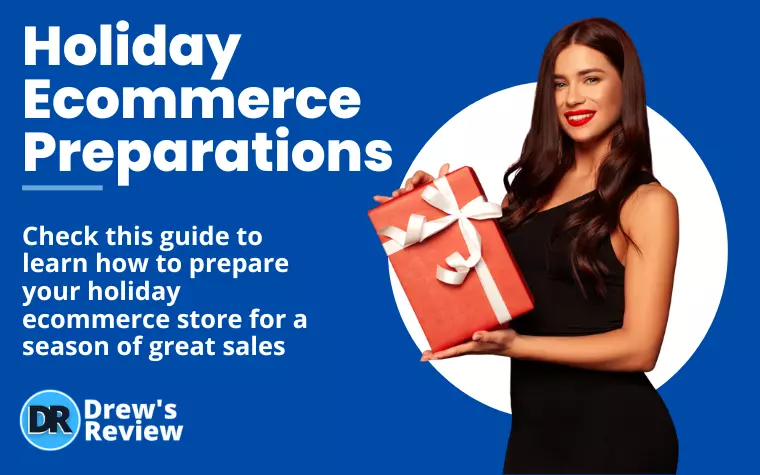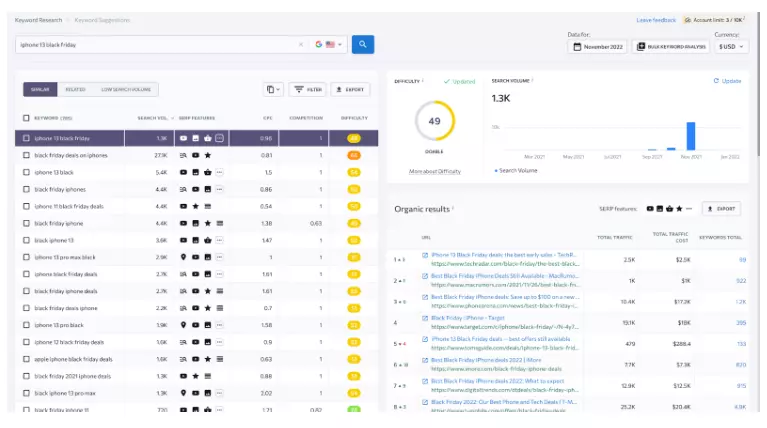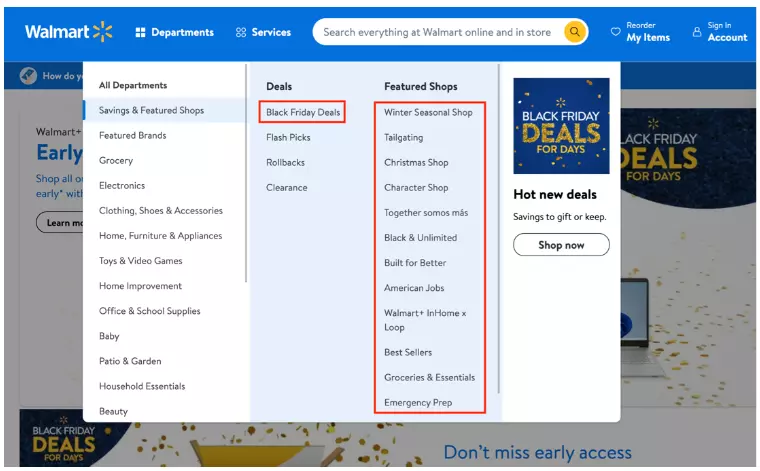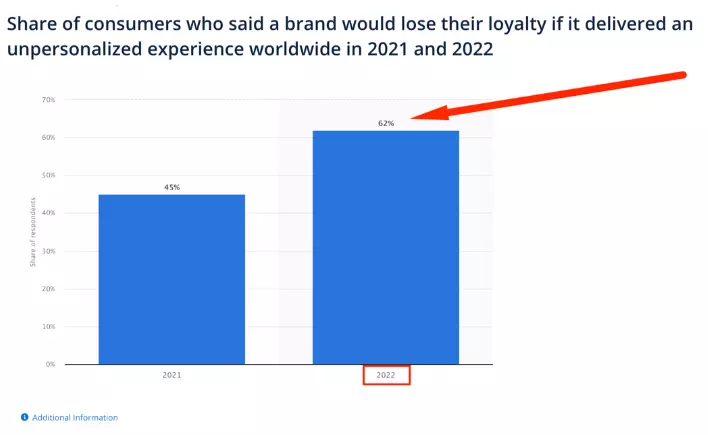
Holiday online shopping always brings a sense of happiness and magic. That is why consumers do their best to pick gifts for their nearest and dearest, making the holiday quarter essential for the retail market.
The historical holiday season sales chart from the National Retail Federation shows that holiday spending beats all yearly records.

- Historical holiday sales from NRF
- Image source
Even though one of the world's biggest shopping events is just around the corner, the common growth spurt in the holiday ecommerce retail industry is expected to deviate this year. The first reason for this change is galloping inflation, which has significantly raised the cost of all products and forced online retailers to cut back on the ecommerce holiday deals offered to shoppers.
Thus, retailers may encounter challenges trying to keep revenue at the same level, and finding bargains may become harder for customers.
The second reason for the tough holiday season is the war in Ukraine. The unprovoked Russian invasion of Ukraine has affected the whole world and caused severe supply chain issues related to increased shipping rates, oil and gas costs, inventory loss, and more.
Therefore, retailers ought to have proper holiday ecommerce preparations in place to drive online store sales and stay afloat, as user experience and trust will matter more than ever.
This article provides an insightful checklist for online stores to help them to get ready for the holiday season sale and win customers' hearts and minds.
Handy Tips for Holiday Ecommerce Preparations
Your online retail business requires attention, precision, and effort to succeed this holiday season. Therefore, we have highlighted the key areas to improve so you can step up your game.
1. Make Sure You Handle Incoming Traffic
Ecommerce holiday shopping means peak days with increased traffic to your website. Therefore, online store downtime due to bugs on the backend and poor bandwidth that cannot handle higher loads can dramatically interfere with your store's reputation, sales, and conversions. That's why checking your website speed, accessibility, security, and usability should be your priority. Check your hosting provider settings and inspect store plugins and integrations to ensure everything works properly.
Moreover, choose the products you want to promote thoroughly and make an inventory in advance. Having to wait for the desired gift can drive holiday shoppers crazy, make them feel frustrated and dissatisfied, and may lead them to buy from competitors.
2. Work on SEO to Boost Online Store Sales
Although search engine optimization is essential for every business, it is especially crucial for online retailers. Ecommerce SEO can boost your store visibility in organic search and help to attract more new customers. Therefore, ensure all your website pages, including the category and product pages, are polished with accurate SEO practices.
First, find and integrate relevant keywords into your page titles, headings, product descriptions, and other page elements where they will be organic and appropriate. Enrich your pages with valid terms while keeping the traffic seasonality in mind and evaluating the search volume and competition.
Use reliable tools to find keywords, like the one from SE Ranking. Based on your request, it compiles three lists of keywords to choose from: similar, related, and long-tail. Taking into account their difficulty, competition, cost-per-click, ranking dynamics, and other vital information that the tool provides, you’ll be able to understand user interests and select the most relevant keywords for your online store.

Secondly, pay attention to the store content. Holiday ecommerce deals and offers should be emphasized and clarified to the prospects. Moreover, convenient internal linking can be added to help clients quickly find related products they may want to add to their shopping cart.
You can also create holiday-focused category pages to cover more topics, thus, attract more traffic. For example, pages related to specific types of gifts, holidays, and offers provide you with space to use more great keywords that will help you appear in the search engine result pages (SERPs) for more queries.

- Holiday-focused store pages on Walmart's website
- Image source
3. Run Ecommerce Holiday Ad Campaigns to Drive Traffic
To achieve your goals during the holiday season sale, empower your organic traffic campaigns with paid advertising. These traffic sources work together perfectly, delivering excellent outcomes. You can run PPC ads on Google, Facebook, and Instagram. Various holiday-focused posts, contests, teaser campaigns, and direct advertising in search or through Google Merchant Center will surely hit the mark.
Remember that paid advertising requires wise strategic planning and budgeting. Otherwise, you may experience overspending, draw buyers with different search intents, and even increase the store bounce rate. Therefore, monitor keywords for bidding in advance and regulate your investments in holiday online shopping advertising.
4. Announce Holiday Plans over Email and Social Media
Holiday ecommerce preparations demand interaction with the audience. The list of followers on social media and the email list are great tools for boosting activity during the holiday shopping season. For example, email marketing with eye-catching promotional emails can be very effective, making prospects feel curious and excited. Thanks to a diversity of beautiful email templates and comprehensive email marketing software, you can turn branded emails into a splendid traffic source.

- Email marketing campaign example from Carter’s
Moreover, social media provides fantastic opportunities for user engagement. By announcing your holiday season sale plans, sharing hot deals, showcasing new products, and communicating with your followers, you build a community around your brand and get access to a huge customer pool.
5. Fine-tune the Shopping Process on Your Website
To begin with, you should do your best to simplify the shopping process on your website by optimizing the checkout. A long checkout process with too many steps can be confusing, especially during the holiday season when everyone is in a hurry. Thus, try to streamline the path from the product catalog to the shopping cart and remove multiple checkout-related forms. It's also a good idea to make the guest checkout option available on your website, as new customers may prefer purchasing without leaving their contact information during the initial visit.
Then, to save customers from disappointment, take care of accurate shipping & delivery information and have an up-to-date return policy. Be honest with your clientele by providing exact shipping options, explaining the actual item returning conditions, and stating all extra charges that may be applied. Inform your customers about free shipping to limited destinations, as placing a banner promising free shipping worldwide may cause plenty of concerns.
What's more, serve multiple payment gateways like PayPal, Google Pay, Apple Pay, Stripe, American Express, etc., and allow customers to choose the most convenient option. Suggesting to pay by credit or debit card is indeed a thing of the past. Employ as many secure payment methods as possible to deliver an unforgettable shopping experience.
6. Personalize Your Website for Holiday Season Sale
Due to an increase in competition in the online retail market, capturing a customer can sometimes seem impossible. To draw attention, you have to stand out and offer more than just competitive pricing, convenient store navigation, and enhanced product assortment– so it is the right time to opt for personalization.
The modern network allows for collecting data about website users effortlessly. We can gather user location details, fetch website pages that led to the visit, compile store browsing records, and more. And all this information can help understand user behavior and analyze visitors' preferences to provide special offers and recommend products based on what users view on your website. It helps to show you care and value your prospects.

- Influence of marketing personalization on consumer loyalty worldwide 2021-2022
- Image source
7. Make Your Holiday Ecommerce Website Mobile-friendly
The busy world promotes shopping on the go while cooking a meal, waiting for a taxi, watching a movie, or performing any other daily activity. Therefore, you throw caution to the wind by ignoring the power of responsive website design.
Mobile-ready online stores get more customers naturally because Google switched to mobile-first indexing, striving to serve the most relevant search results to web users. Optimizing your mobile website lets you attract customers using tablets or smartphones as their primary tools for online shopping, so mobile-friendliness should be on your to-do list for proper ecommerce holiday preparation.
Summing it Up
Online retail is not rocket science if you know how to draw buyers to the products you offer.
Even in these challenging times, the upcoming holiday season can provide online retailers with exceptional opportunities to extend brand awareness, grow their customer base, and increase revenue.
To have successful online sales, you need to ensure your website meets the demand of your target audience and serves a convenient and hassle-free way of shopping.
Take care of your product catalog by making it look neat and compelling for potential clients, pay attention to store navigation, help customers feel the ease of the checkout process, and highlight your customer service.
These essentials will help you to make your store a perfect place for holiday gifts that is user and Google-friendly and constantly attracts new shoppers.
Related Articles
- Best Ways to Make Passive Income on YouTube - April 15, 2024
- How I Make Faceless YouTube Channels With AI - April 9, 2024
- Top 21 Faceless YouTube Niches to Earn Big Profits in 2024 - April 3, 2024
